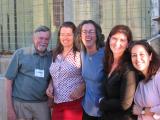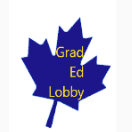Unprecedented numbers of doctoral students, new hybrid disciplines and digital investigative technologies in 21st century research cry out for a corresponding catch-up to doctoral education. Unfortunately, doctoral education escaped the knowledge explosion. In retrospect, The Carnegie Initiative on the Doctorate (CID) as described in the book The Formation of Scholars: Rethinking Doctoral Education for the 21st Century (2007) just missed the mark in equipping doctoral education to equal the demands of the 21st century. For example, one miss is the message of the CID that with a 21st century doctoral education a ‘steward of a discipline’ ought to emerge.

The Carnegie Foundation for the Advancement of Teaching funds initiatives to advance the performance of education systems by building their capacity to improve. The CID failed to advance the performance of the system of doctoral education by sticking in outcomes like disciplinary stewardship and by not building systemic capacity for improvement within doctoral programs during the CID.
‘Ongoing renewal’ would be the bumper sticker of the CID. Judging from the CID Collections website which features submissions from the 80 participating programs in six disciplines, and the book, CID participation built capacity for renewal. (This example from Duke shows the initiatives of a History PhD program).
To support ongoing renewal after the CID, participating programs made up lists of unanswered questions. In 2005, the mathematics program at the University of Nebraska-Lincoln, posted the following excellent unanswered questions to complete a CID assignment.
Unanswered Questions
- How can we best poll current students and recent grads about the effectiveness of our initiatives?
- Have we made sufficient adjustments to our Ph.D. requirements to accommodate students seeking interdisciplinary degrees?
- What other ways can we include collaborative learning into the program? (I.e., through cross-disciplinary experience, and experiences for those interested in careers in government or industry)
Were these questions answered?
The CID might have required that programs post updates to unanswered questions along with new unanswered questions to instill an incentive for ongoing renewal. Instead the CID collections website features only work done for the CID.
Better yet the CID might have started-up scholarship of doctoral education with an open-access, (student-edited?) journal like The Journal of Ongoing Renewal of Carnegie Initiative Doctoral Programs. This would also help fill in the vacancies in journals of doctoral education. There is but one journal of doctoral studies. Good scholarship generates more questions, investigations, sharing, publications and conferences. Ongoing scholarship of doctoral education spurs ongoing renewal.
The book provides many great examples and insights into renewal yet it fails to complete its primary task: to make the process of rethinking a part of doctoral education. The book shows how the CID made doctoral education more aligned and responsive to changes of the 21st century, but fails to show doctoral programs how to make renewal automatic and ingrained.
What ingredients for ongoing renewal did emerge from the CID?
1. Initially an expert in doctoral education sets the wheels in motion. Chris Golde, a leading scholar in doctoral education, set a course for the CID that none of the programs alone or other facilitators could generate. Without her setting the right tone for the team, the themes and tasks, the CID may have floundered. The book minimizes the role of a knowledge leader in doctoral education to set up renewal efforts, at least initially.
2. Invite doctoral learners and faculty to multidisciplinary conferences. Without the buzz of fruitful interaction in a much-anticipated, silo-busting context devoted to examining doctoral programs during the CID, can the success of the CID be replicated, even with this book and the great examples? One powerful way to commit to ongoing renewal would be to bring stakeholders together annually or bi-annually to share results, updates, and future investigations.
3. Involve the learner. A faculty member participant in the CID described the doctoral student as ‘the secret agent of change’. Doctoral students are the future stewards of research training; to change research training require doctoral students to critique their own doctoral programs. This instills a process for ongoing renewal and harnesses the powerful insights of the doctoral student. Making examination of the doctoral program a graduation requirement equips graduates with insights to doctoral education and makes graduates a vector for change in doctoral education going forward in their careers.
If during graduate school, all doctoral students attended multidisciplinary graduate studies’ conferences, to address unanswered questions about their doctoral program, the will of the CID and Carnegie Foundation would be done. Sustainability, capacity building, and multidisciplinary exchanges would be brought together to complete a graduation requirement. (The Graduate Review and Improvement Process (GRIP) program at the University of Minnesota also gets graduate students involved in improvement).
In the 21st century, ongoing renewal makes doctoral training stay a pace of the changes in society and in knowledge production. Ultimately, a 21st century doctoral education must also produce a disciple of doctoral education even before it produces ‘a steward of a discipline’. Study/feedback/critique of doctoral training during doctoral education provides for ongoing renewal of doctoral education; a 21st century imperative.
How helpful was the Carnegie Initiative on the Doctorate to rethinking doctoral education for the 21st century? Ongoing renewal could become the pivotal contribution of the CID to doctoral education for the 21st century. If hitched to a process like ongoing scholarship and/or made a graduation requirement, ongoing renewal provides the intelligence to keep doctoral education responsive, real, and ready.
A process was needed to get to the unanswered questions when the CID stopped. Without a new process, a system goes back to its baseline, in this case the baseline is no process for ongoing renewal. If the CID succeeded in building capacity for ongoing renewal then the unanswered questions generated during the CID a decade ago, should be addressed by now and new unanswered questions would have come up as an ongoing renewal process takes hold.
A decade later, are the 80 CID doctoral programs enacting CID-inspired ongoing renewal? Has some process for ongoing renewal been created? What happened to the unanswered questions? How much did participation in the CID spur renewal after the CID finished? Watch this blog for answers to these questions.
If you would like to help me find out the answers, please contact me. We can write a paper for the one journal of doctoral studies. If you participated in the CID as a student, faculty member or facilitator, I welcome contact/correction.

